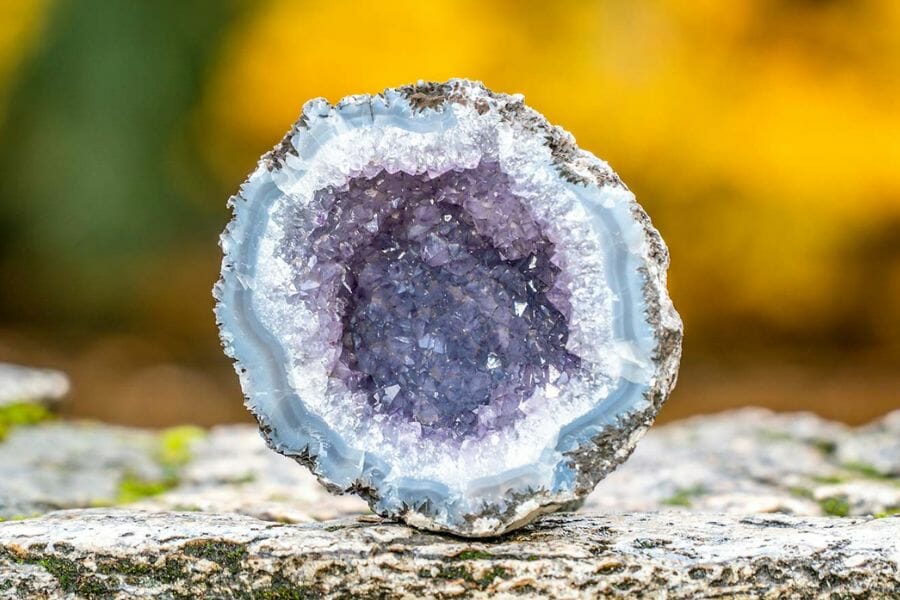Geodes are like nature’s surprise eggs, filled with sparkling crystals inside a plain-looking rock. Our state is a treasure trove for these hidden gems, with its many different landscapes that make it perfect for rock hounds.
If you’re itching to crack open your own crystal-filled wonder, you’re in the right place!
This article will show you the best spots in our state to find geodes. We’ll also share some handy tips to make your geode hunting adventure a success.
So grab your hammer and get ready to discover the beauty hiding in ordinary-looking rocks all around this state!
How Geodes From Here
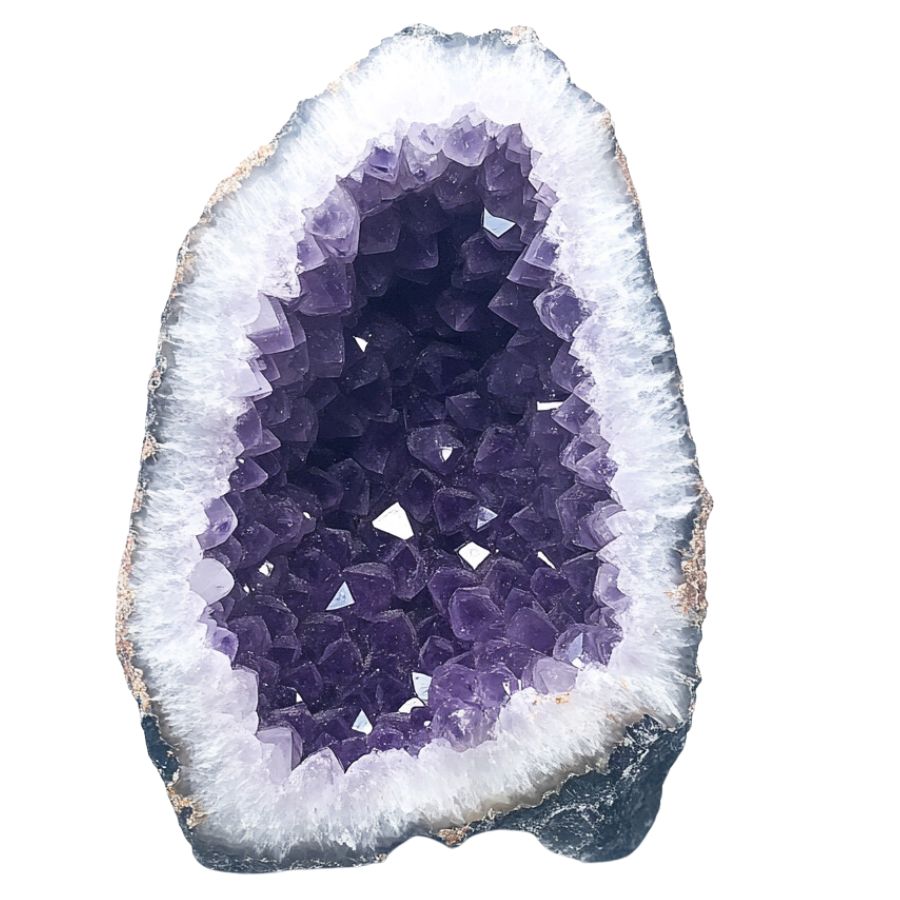
Geodes form when bubbles in volcanic rocks or spaces in sedimentary rocks get filled with minerals over time.
First, water rich in minerals like quartz or calcite seeps into the hollow space. As the water evaporates, it leaves behind the minerals, which slowly build up layer by layer.
Eventually, these minerals create a crystal lining inside the geode. The outer shell stays rough, while the inside becomes a sparkling treasure.
The process can take thousands, even millions, of years, making each geode a unique and beautiful time capsule of Earth’s natural forces.
The Types Of Geodes Found in the US
There are many fascinating varieties of geodes that can be found across the United States, including in our own state. Each type is distinctly beautiful and intriguing:
Amethyst Geode
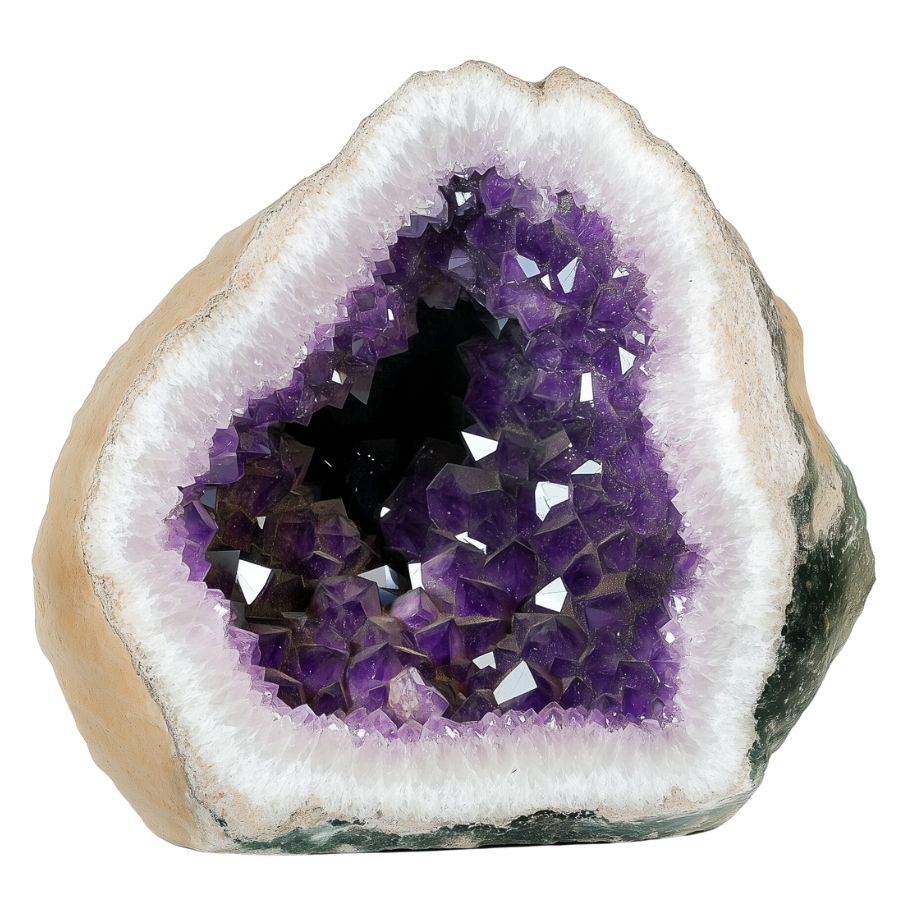
Amethyst geodes look plain on the outside, like a potato. But crack them open, and you’ll find stunning purple crystals. These crystals can be light lavender or deep purple.
The structure of crystals inside can vary widely. Some are tiny and densely packed, creating a sparkling surface. Others form large, distinct points that jut inwards.
The color range is impressive too, from pale lilac to deep royal purple. Some amethyst geodes develop unique features. “Stalactites” of amethyst might hang from the top.
In rare cases, you might find a water bubble trapped inside, a remnant from the geode’s formation millions of years ago.
Citrine Geode
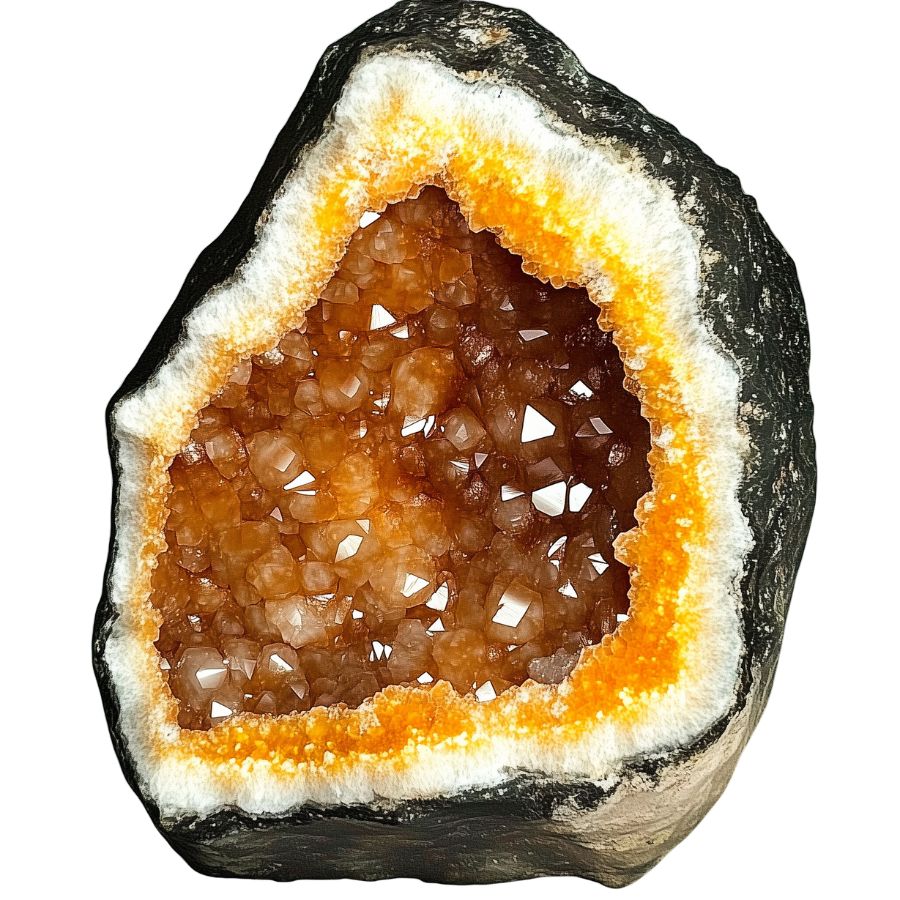
Citrine geodes are eye-catching rocks with golden yellow to orange crystals inside. They sparkle when light hits them, looking like sunshine trapped in stone. The colors come from iron mixed in with the quartz.
Unlike many gemstones, citrine’s color is often evenly distributed throughout the crystal.
Most citrine on the market isn’t natural. It’s actually heat-treated amethyst. This process turns the purple amethyst into vibrant citrine. Natural citrine is rarer and often has a more subtle color.
Pyrite Geode
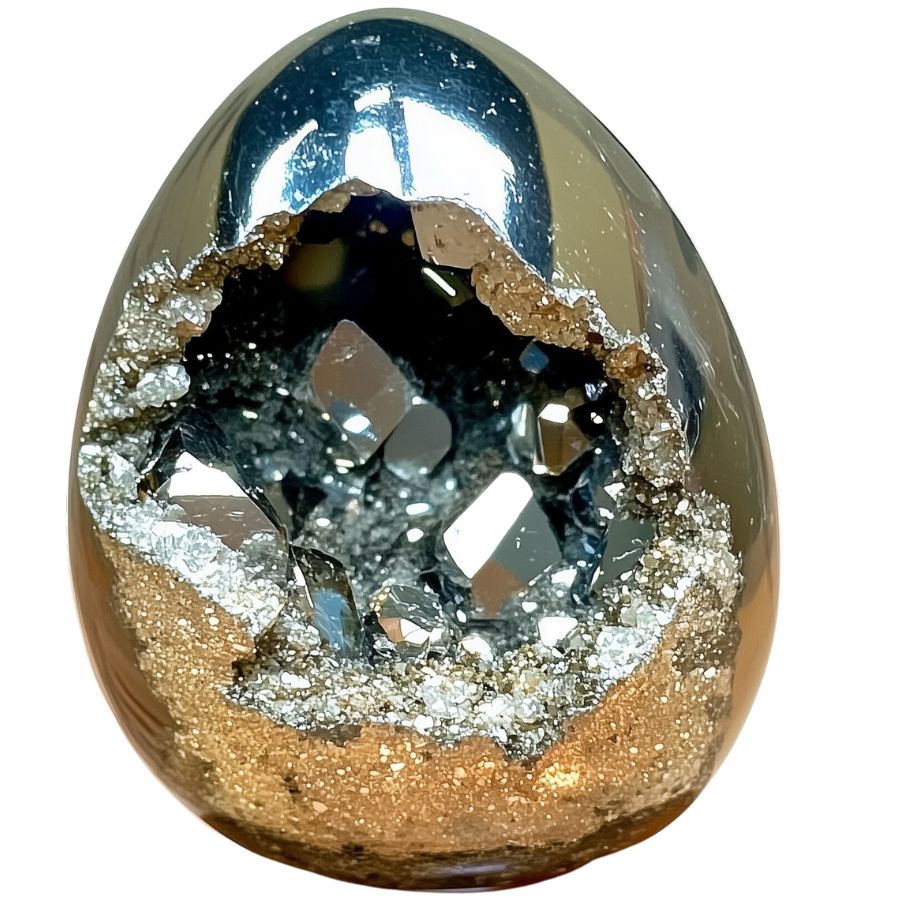
Ever cracked open a rock and found gold inside? Well, not real gold, but something that looks just like it. That’s a pyrite geode. Pyrite is called “fool’s gold” because it’s so shiny and golden.
Inside these geodes, pyrite forms in cool shapes. Sometimes it’s perfect cubes. Other times its clumps or even round balls called “pyrite suns”.
Pyrite has a fun history. People have been mixing it up with real gold for thousands of years. That’s how it got its nickname.
Selenite Geode
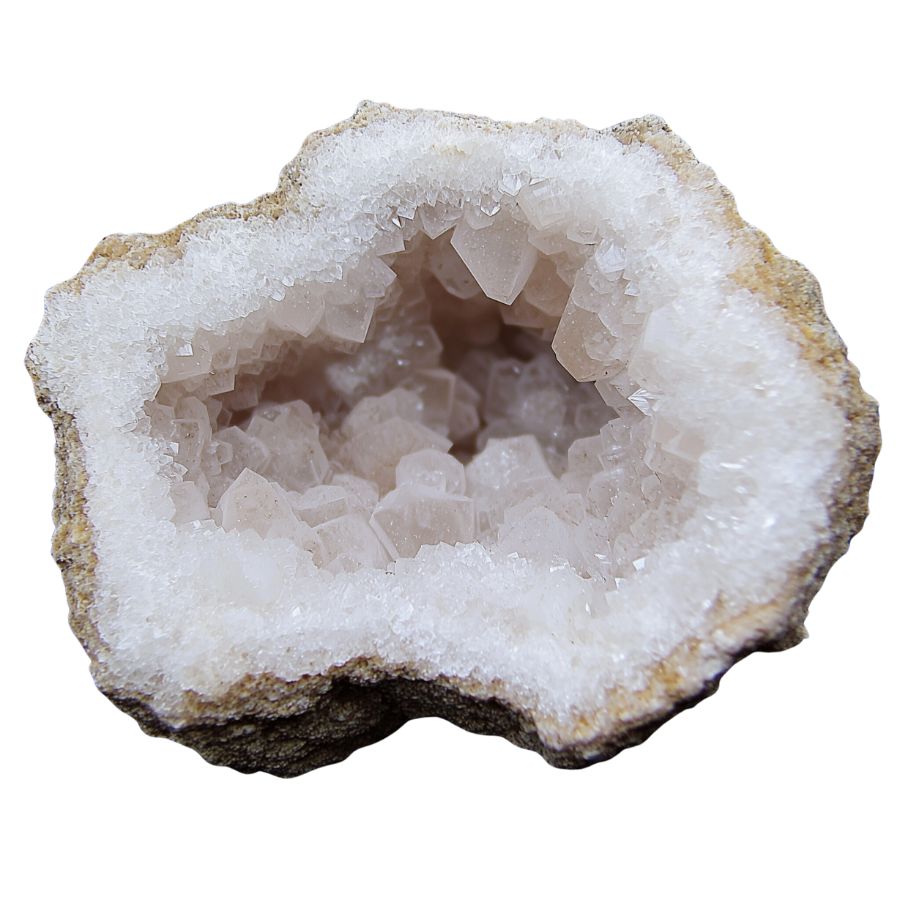
Selenite geodes stand out from the crowd. They’re white and see-through, with a glassy look. When you open one up, you’ll see crystals that look like they’re made of ice or moonlight.
Unlike harder geodes, selenite is soft. You can scratch it with your fingernail! This softness means you need to handle it carefully. But it also means selenite can be shaped into beautiful forms easily.
One cool thing about selenite is how it plays with light. Hold it up to a lamp, and you’ll see the light shine right through it. This makes selenite geodes popular for decorative lamps and light fixtures. They add a magical glow to any room.
Celestite Geode
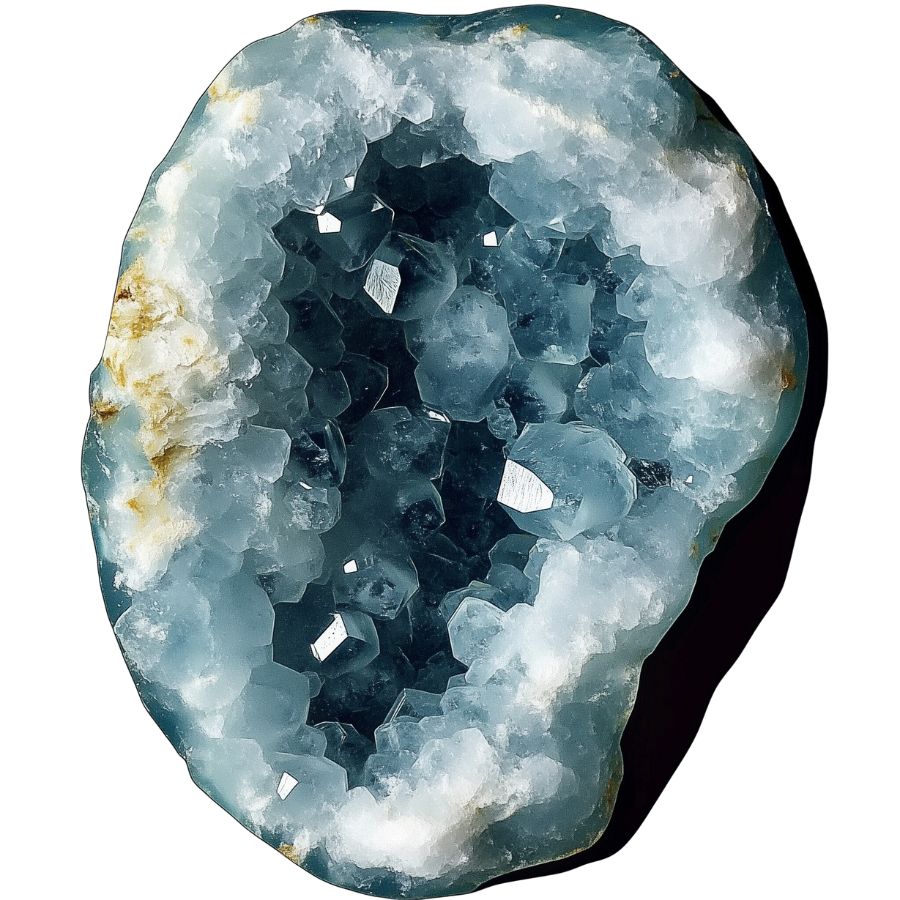
Celestite geodes are like pieces of sky trapped in rock. Their crystals are typically a delicate blue, ranging from almost colorless to deep sky blue. In rare cases, celestite can form in other colors. Pink celestite is highly prized by collectors.
One unique feature of celestite is its perfect cleavage. This means the crystals can be easily split into rhombohedral shapes.
These geodes form in a unique way. They start as nodules of a soft mineral called alabaster. Over time, this dissolves and is replaced by celestite crystals. Some celestite geodes are huge, like the famous Crystal Cave in Ohio.
Celestite isn’t just pretty to look at. It’s used to make strontium, an element with many uses. You’ll find strontium in fireworks, where it creates red colors. It’s also used in making TV screens and ceramics.
Jasper Geode
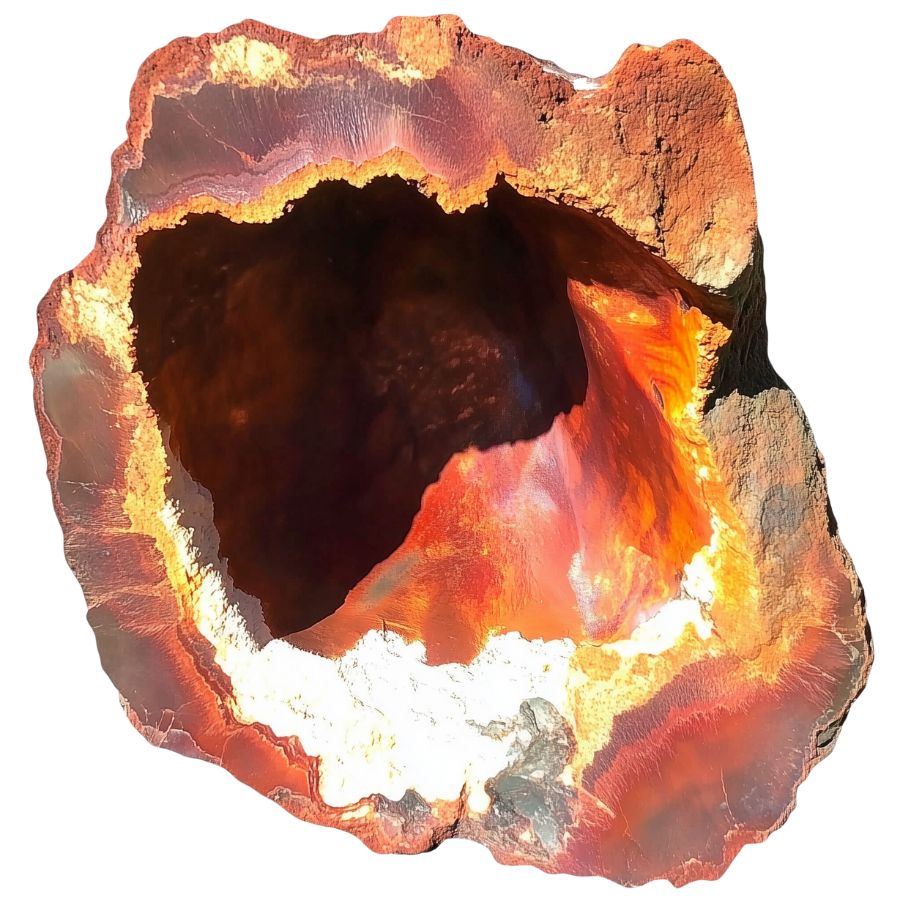
Jasper geodes are the chameleons of the mineral world. They can appear in almost any color, often with multiple hues in a single specimen. Patterns can range from solid colors to intricate swirls, bands, or spots.
One fascinating type is picture jasper. These geodes contain patterns that resemble landscapes, with “skies,” “mountains,” and “rivers” visible in the stone. Each one is like a miniature painting created by nature.
Some jasper geodes contain orbicular patterns – spherical structures that formed as the jasper solidified. These create eye-catching bull’s-eye or flower-like designs in the stone, making each piece truly one-of-a-kind.
Carnelian Geode
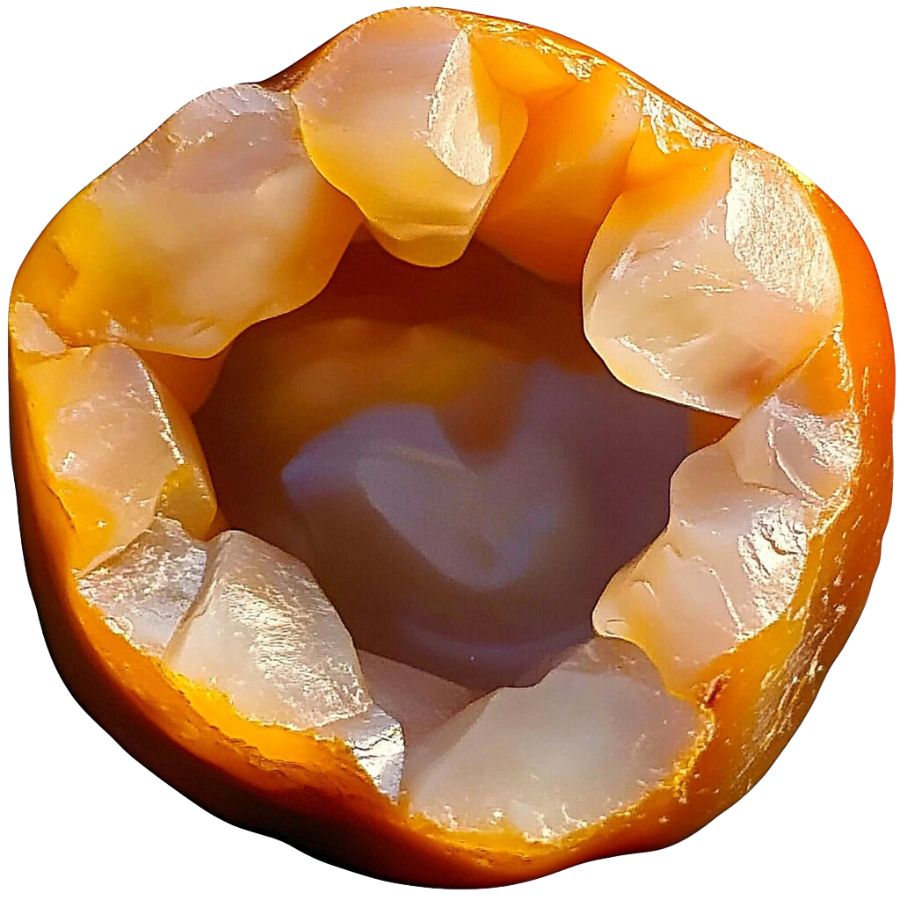
Carnelian geodes have vibrant orange to reddish-brown colors. They can be somewhat see-through, which makes them look even more interesting. The bright colors come from the iron in the stone.
These geodes stand out from other similar stones. They’re brighter than sard, which is usually darker and more brownish. And unlike agate, carnelian doesn’t have bands or stripes.
Carnelian has been popular for a long time. Ancient Egyptians and Greeks used it to make special rings. It’s tough enough for everyday jewelry.
Some people heat or dye carnelian to make its color even brighter. This makes it a favorite for both rock collectors and jewelry lovers.
Fluorite Geode
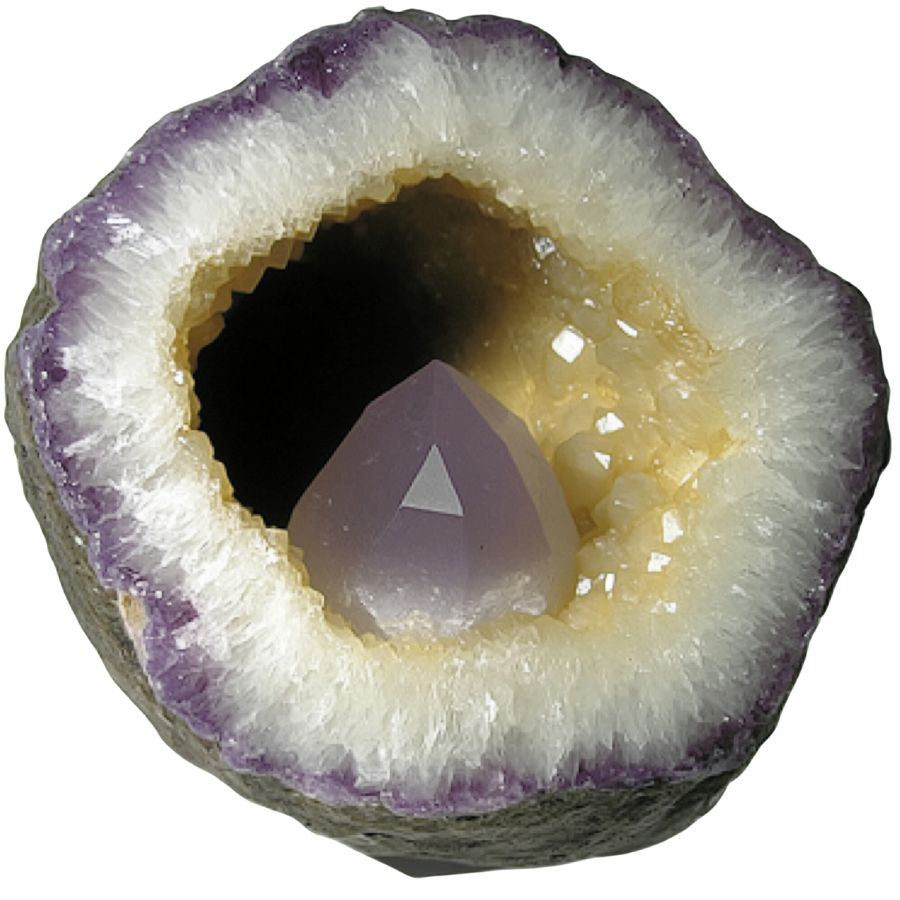
Fluorite geodes are like nature’s rainbow. They come in many colors – purple, green, blue, yellow, and sometimes even clear or black. When you open one up, you might see cube-shaped or eight-sided crystals inside.
What makes fluorite special is that you can often see more than one color in a single stone. This is different from many other geodes. Also, fluorite has a unique way of splitting when it breaks.
A cool fact: fluorite glows blue under ultraviolet light. This was first discovered back in 1852. Because of its many colors and this glowing ability, fluorite is sometimes called the “most colorful mineral in the world.”
Scolecite Geode
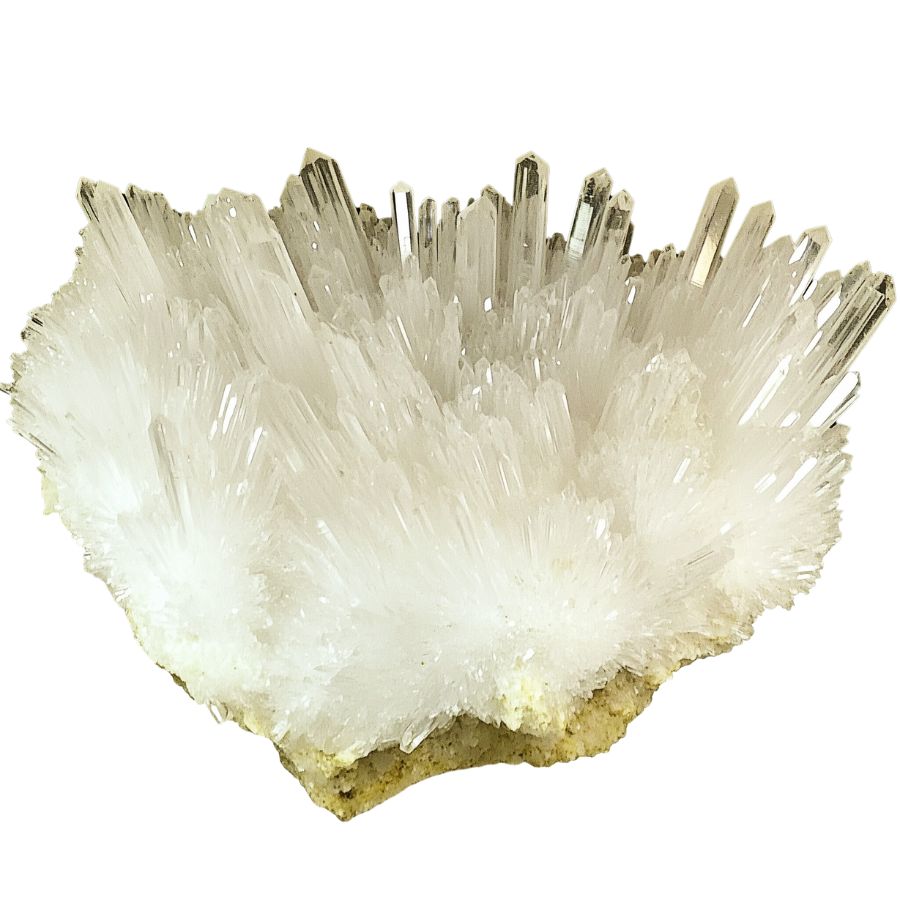
Scolecite geodes are like tiny crystal caves. They’re usually white or colorless, but sometimes you might find pink, yellow, or green ones.
What makes them special is the crystals inside. They look like thin needles or delicate hairs, all pointing out from the center.
These geodes are different from others because of their crystal shape. Instead of blocky or chunky crystals, scolecite has these fine, hair-like ones. This gives them a unique, delicate look.
Scolecite has an interesting property – it can hold a lot of water in its structure. This means it can absorb and release water easily. This makes scolecite useful in various ways, not just as a pretty rock to look at.
Apophyllite Geode
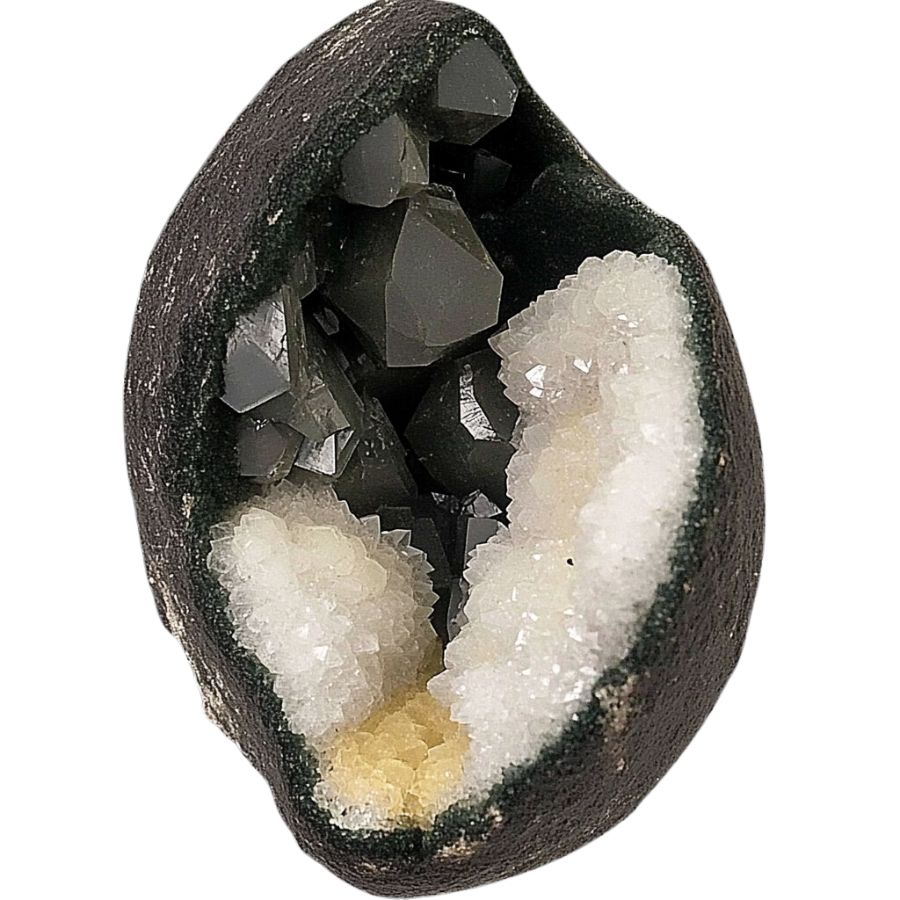
Apophyllite geodes are like nature’s disco balls. They often have dark or black crystals inside a hollow rock. These crystals can be see-through or slightly cloudy, with cube-like or flat shapes.
What makes apophyllite geodes stand out is how the crystals form. They grow in round clusters that look like tiny disco balls. This unique formation is rare and makes them special to rock enthusiasts.
Collectors really prize these “disco ball” clusters. They’re not common, which makes them valuable to people who love unusual rocks. The way apophyllite crystals catch and reflect light adds to their appeal, making them fascinating to look at and study.
What Rough Geode Looks Like
Identifying a rough geode might seem tricky, but with a few tips, you can spot one even if you’re not a rock expert. Here’s how you can do it.
Look for a Rounded Shape
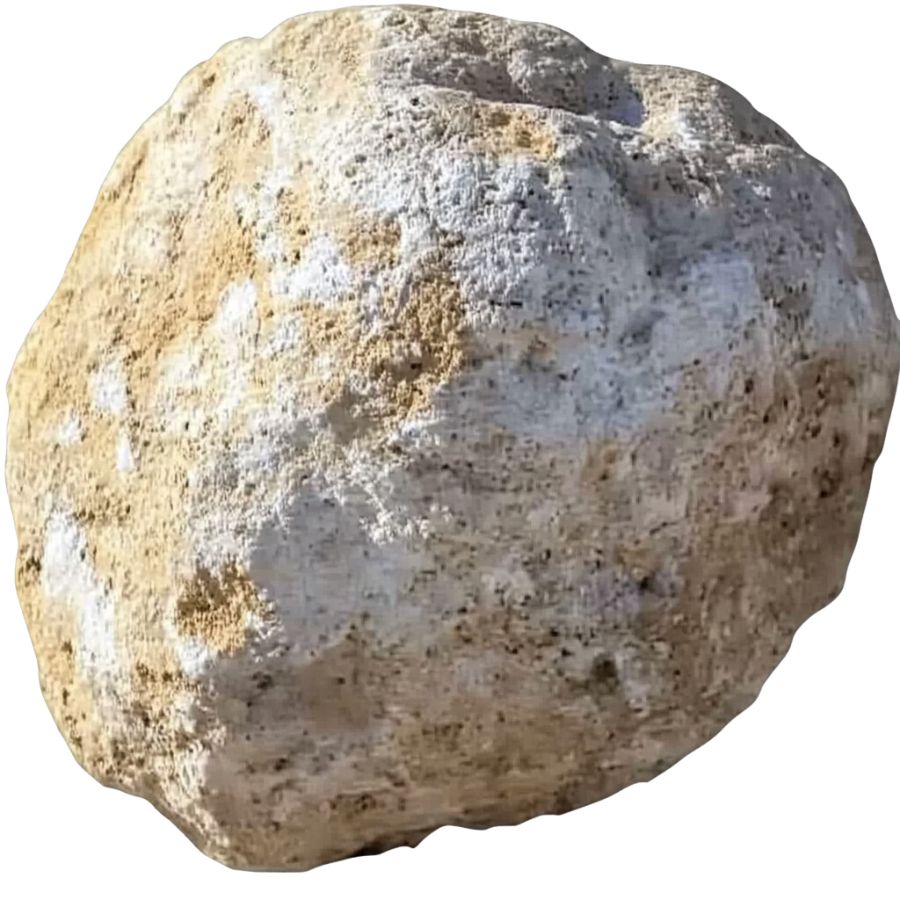
A rough geode often has a rounded or egg-like shape. It might not be perfectly round but look for a generally bulbous form.
When you’re out searching, skip the flat, jagged rocks. Geodes usually have smoother exteriors because they’ve been rolling around in rivers or other environments for a long time.
Check for a Dull, Bumpy Surface
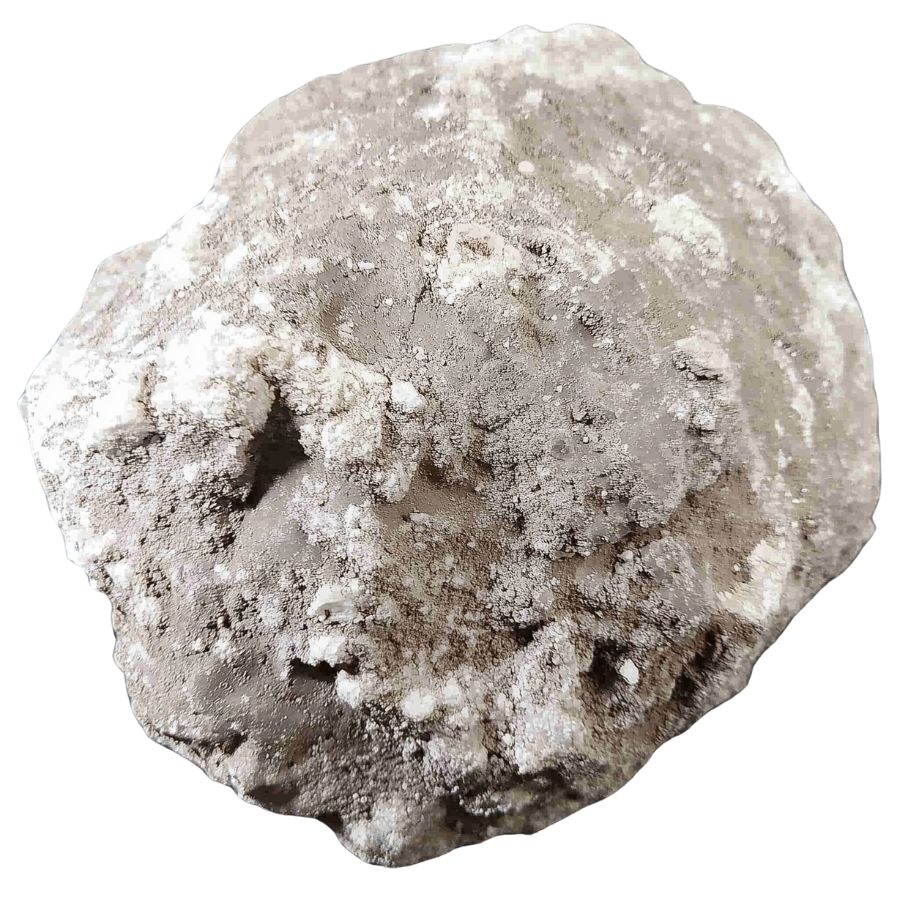
The outside of a geode isn’t usually shiny. Instead, it’s dull, bumpy, and a bit rough.
Imagine a potato or a clump of dirt with some bumps and dents. That’s how a geode might look before it’s cracked open.
The outside won’t give away much of what’s inside, so don’t be fooled by its ordinary appearance.
Test the Weight
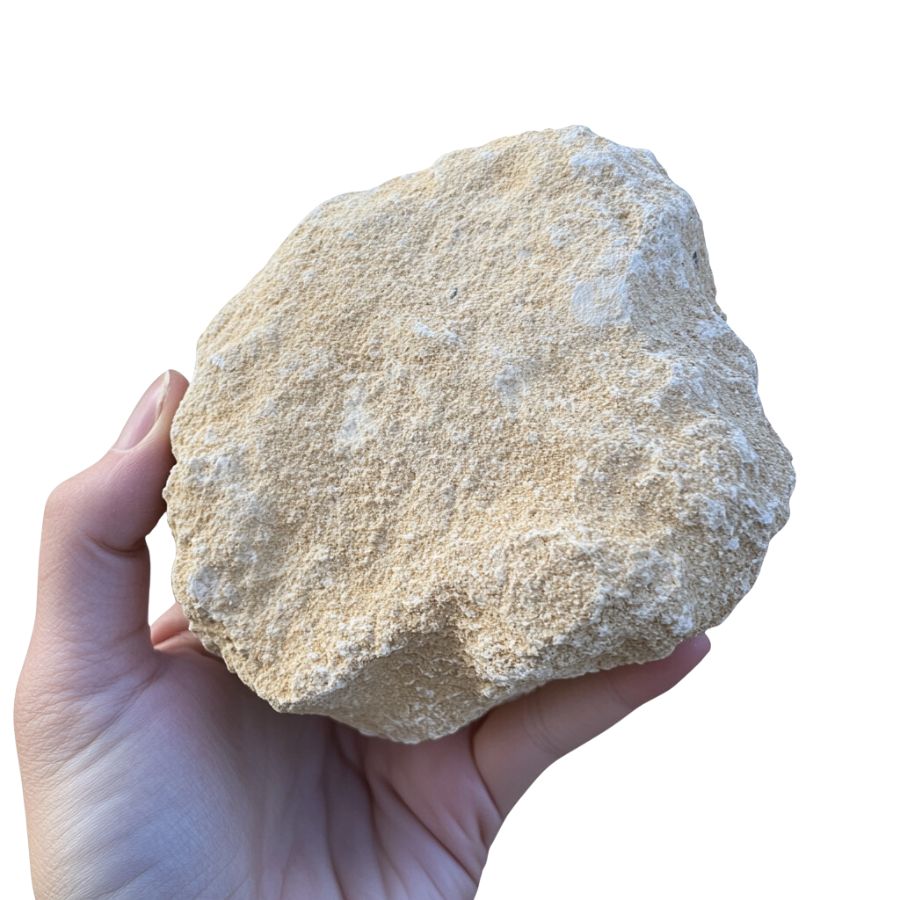
Pick up the rock. Does it feel lighter than it looks? That’s a good sign!
Geodes are hollow or partially hollow, which makes them lighter than solid rocks of the same size. If it feels unexpectedly light, you might have found something special.
Look for Tiny Crystals or Mineral Patches
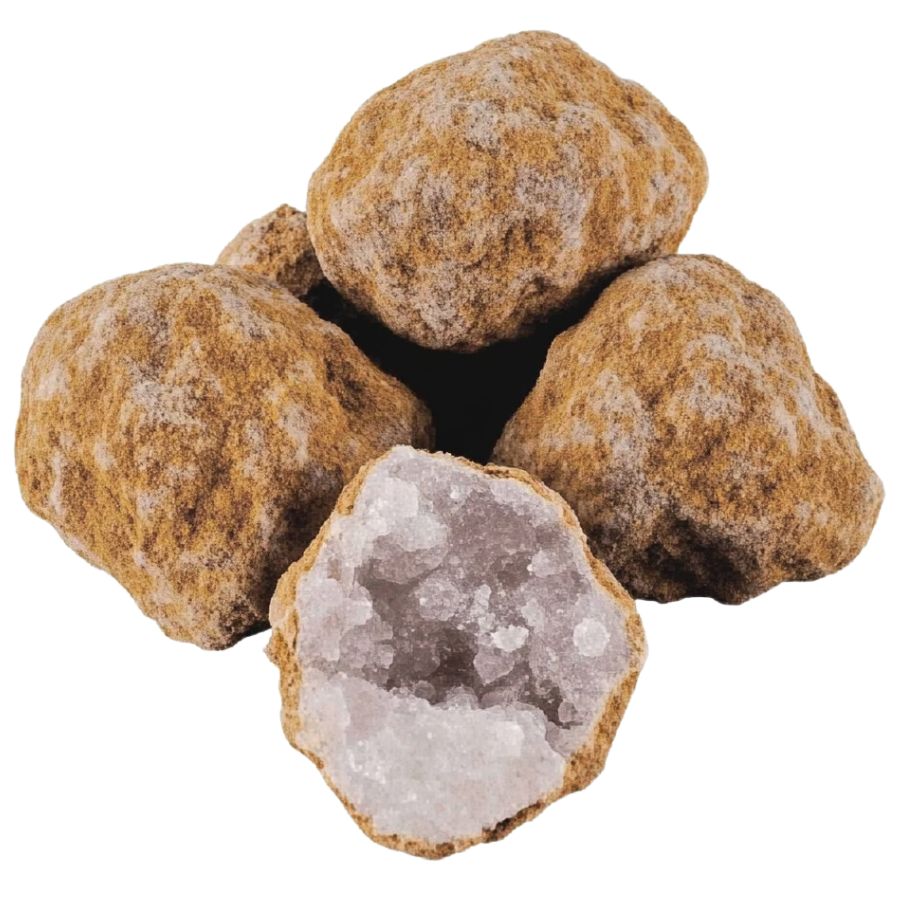
Sometimes, you can spot small crystals or mineral deposits on the outside. These could look like tiny sparkles or specks of color.
While the outside of a geode is usually dull, a little peek of what’s inside might show through. Keep an eye out for these hints, especially if you’re in a known geode-rich area.
Tips on Where to Look
Once you get to the places we have listed below there are some things you should keep in mind when you’re searching:
Explore Riverbeds and Streams
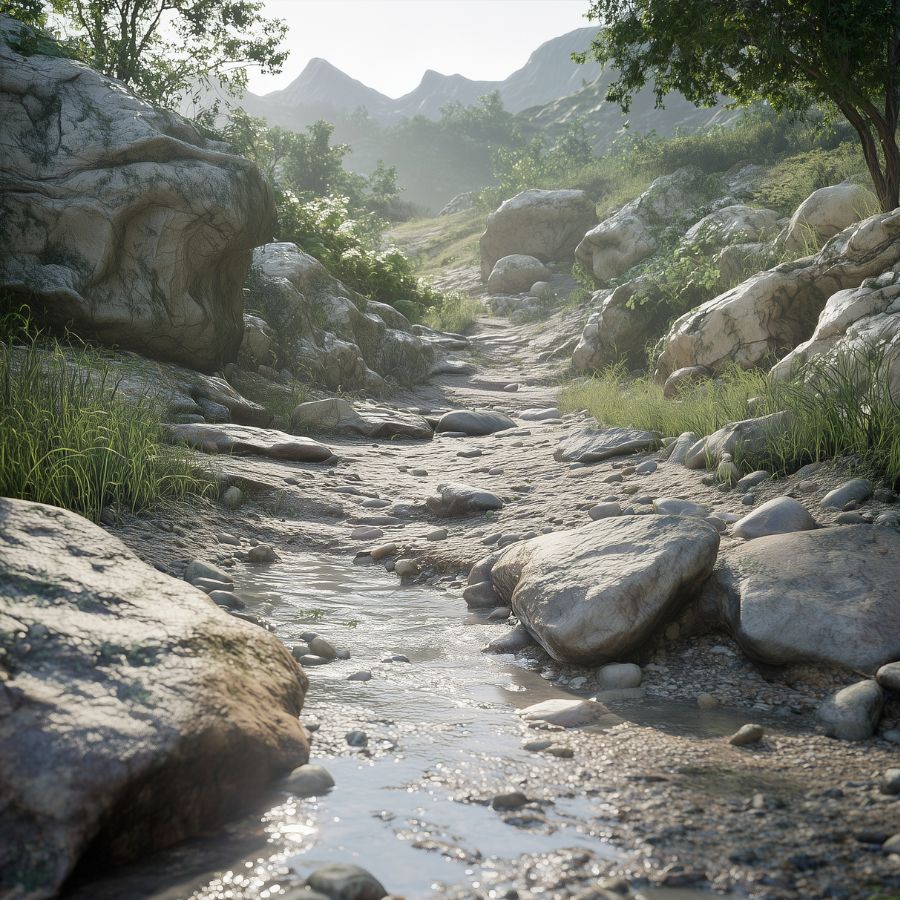
Geodes often form in riverbeds or streams. Water flow smooths out their rough edges and deposits them in these areas.
When exploring, focus on gravel bars or the edges of rivers where rocks naturally gather.
Search in Sedimentary Rock Layers
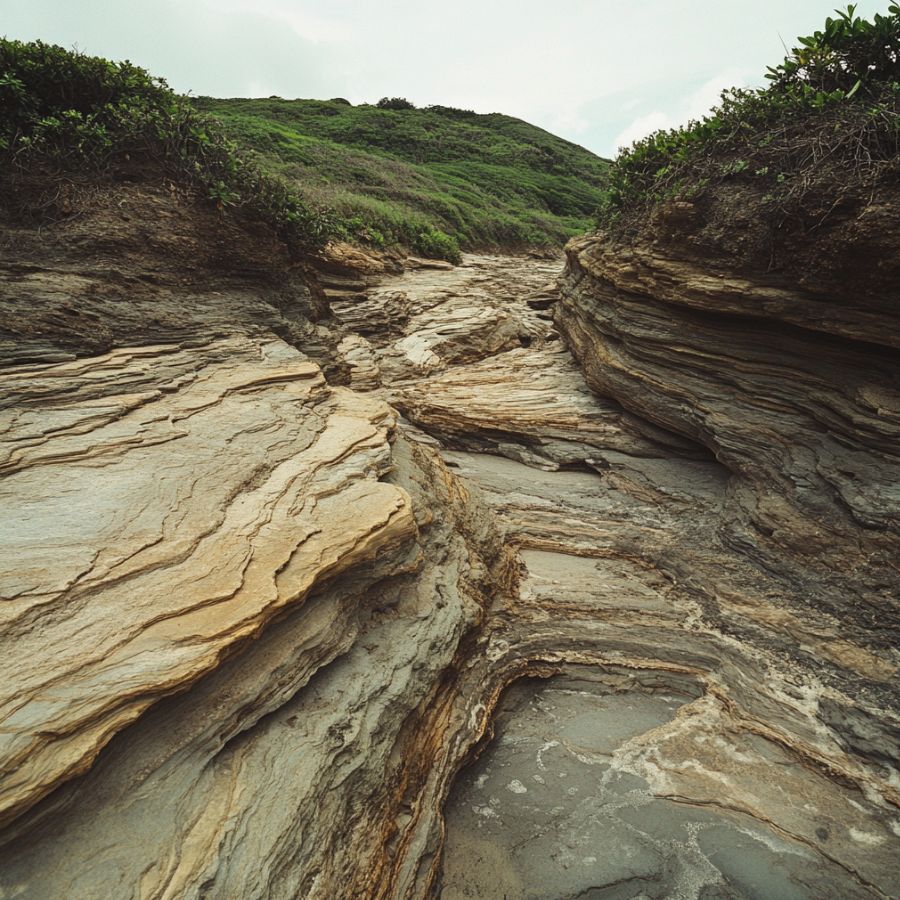
Sedimentary rocks, like limestone, are prime spots for geodes. These rocks form in layers over time, trapping minerals inside.
Look for areas where sedimentary rocks are exposed, such as cliffs or road cuts.
Visit Old Mines or Quarries
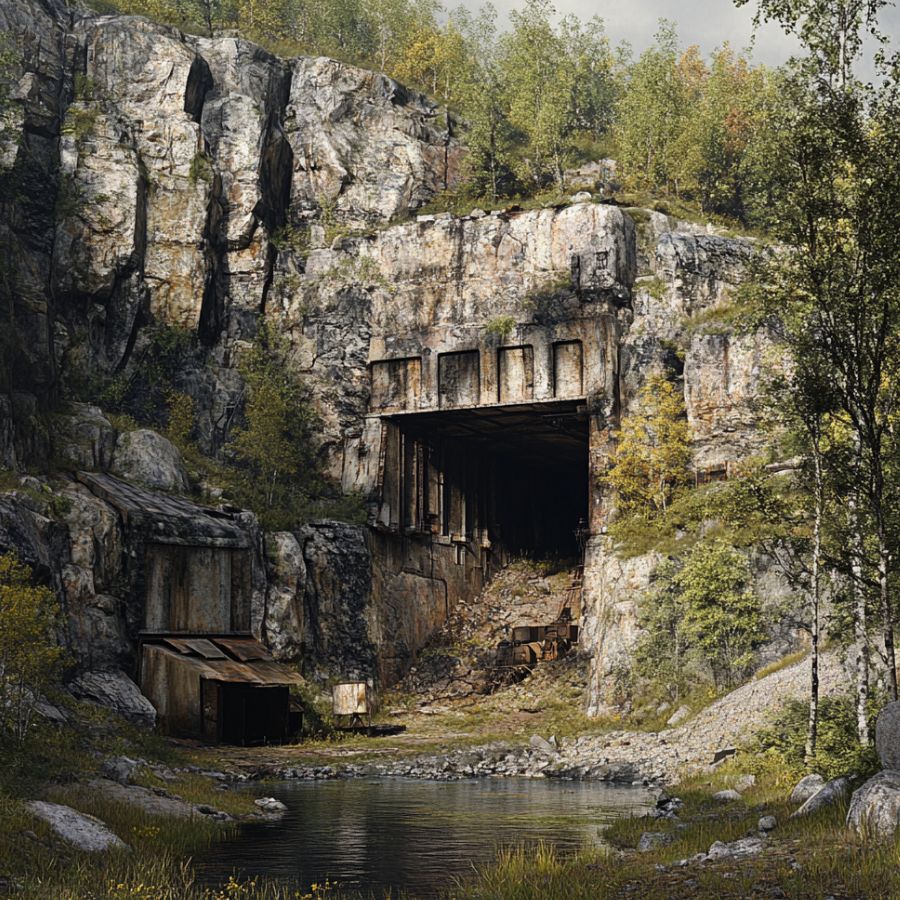
Abandoned mines and quarries are excellent spots for geode hunting.
Workers often missed geodes while digging for other materials. Explore the tailings or leftover rock piles for hidden treasures.
Explore Hills and Rock Outcrops
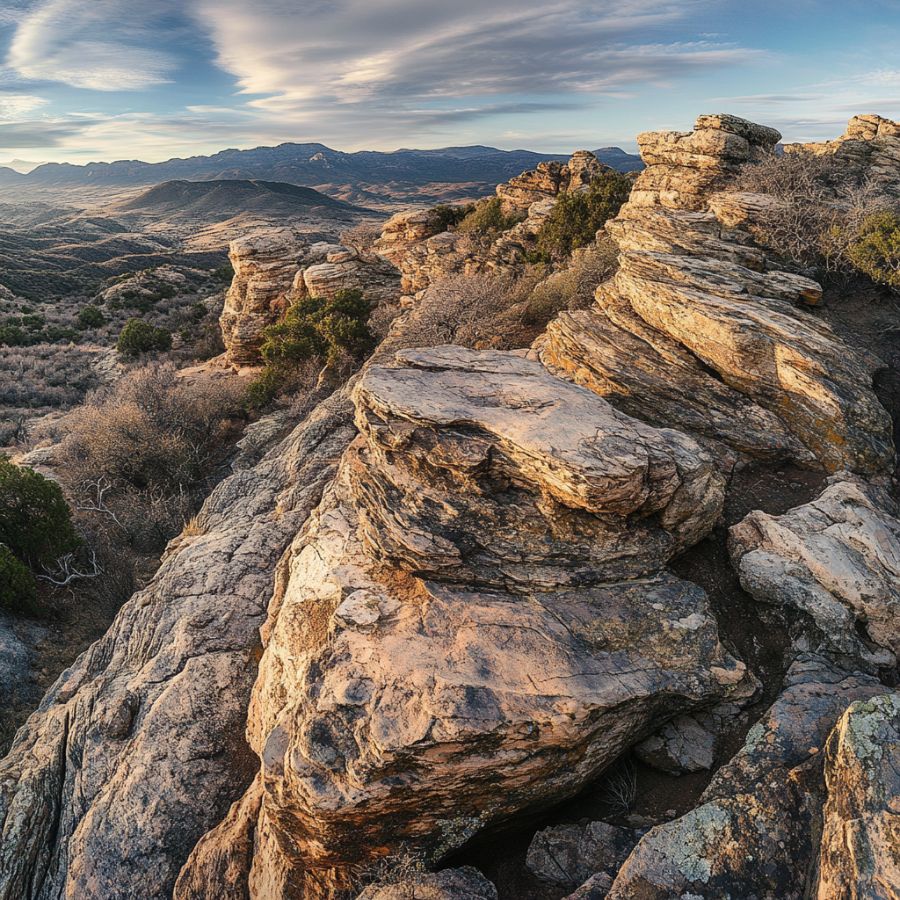
Hills and rocky outcrops often reveal geodes. As erosion wears away the softer rock, it exposes the harder geodes.
Look for areas with exposed rocks and keep an eye out for rounded shapes.
The Types of Geodes You Can Find in Arizona
Geodes come in various sizes and shapes and can be found anywhere worldwide. The kind of crystal a geode contains determines how much a geode is worth and its allure. Arizona is home to the following geodes:
- Agate geodes
- Chalcedony geodes
- Quartz geodes
The Best Places To Find Geodes in Arizona
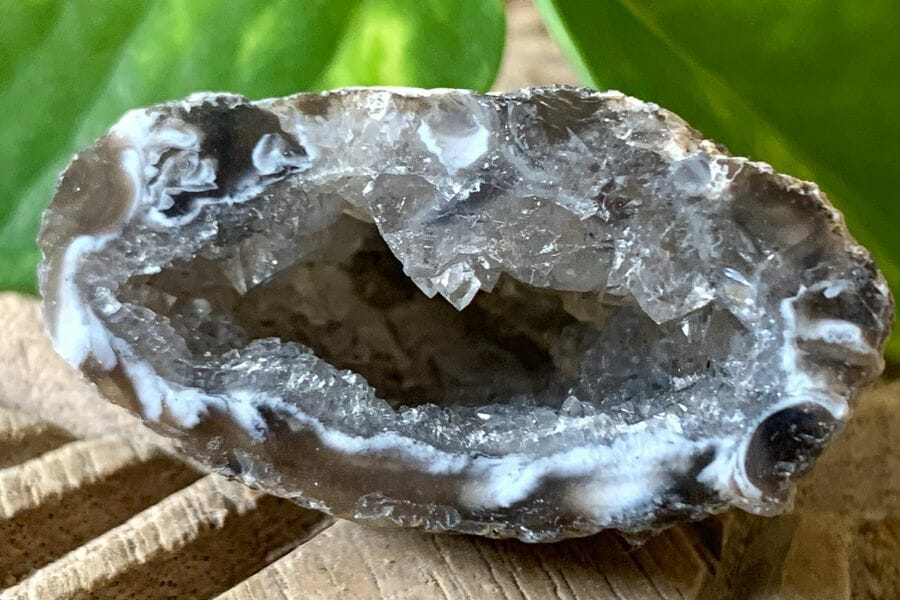
We’ll start by listing our top geode-hunting locations in Arizona. There are many fantastic locations for gem mining in Arizona, but only a select few are ideal for what we’re looking for. Even though some of these places are less well-known, they frequently provide excellent possibilities while searching.
Always Confirm Access and Collection Rules!
Before heading out to any of the locations on our list you need to confirm access requirements and collection rules for both public and private locations directly with the location. We haven’t personally verified every location and the access requirements and collection rules often change without notice.
Many of the locations we mention will not allow collecting but are still great places for those who love to find beautiful rocks and minerals in the wild without keeping them. We also can’t guarantee you will find anything in these locations since they are constantly changing.
Always get updated information directly from the source ahead of time to ensure responsible rockhounding. If you want even more current options it’s always a good idea to contact local rock and mineral clubs and groups
Canyon Lake Reservoir
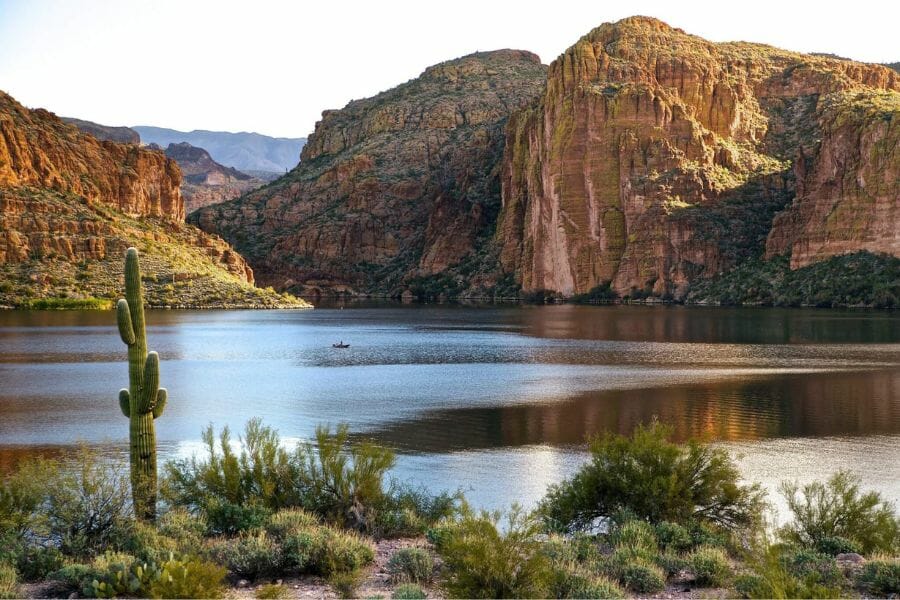
Canyon Lake Reservoir is a gorgeous oasis in the Arizona desert. It’s a man-made lake created by the Salt River Project in 1925 and is one of four reservoirs that are part of the Salt River system. The lake is in the Tonto National Forest, surrounded by the stunning Superstition Mountains. The area is known for its incredible geology, with layers of rock formations that tell the story of millions of years of geological history.
The terrain around Canyon Lake Reservoir is rugged and rocky, with steep canyon walls and towering cliffs. The lake is surrounded by stunning red rock formations rising from the water’s edge. With its stunning scenery, rich geological history, and unique geography, it’s no wonder this man-made lake has become one of the most popular attractions in Arizona.
Before you bring anything home, make sure you’ve read up on the State of Arizona’s most recent collecting regulations.
Where we found geodes in Canyon Lake Reservoir
While there may be some geodes in the surrounding terrain and rock formations around Canyon Lake Reservoir, the lake itself is not typically a prime spot for geode hunting.
DON'T MISS OUT ON ANY GREAT FINDS!
While you're out searching for Geodes you're going to find a lot of other interesting rocks and minerals along the way. The last thing you want to do is toss out something really interesting or valuable. It can be easy to misidentify things without a little guidance.
We've put together a fantastic field guide that makes identifying 140 of the most interesting and valuable rocks and minerals you will find REALLY EASY. It's simple to use, really durable, and will allow you to identify just about any rock and mineral you come across. Make sure you bring it along on your hunt!
Gila County
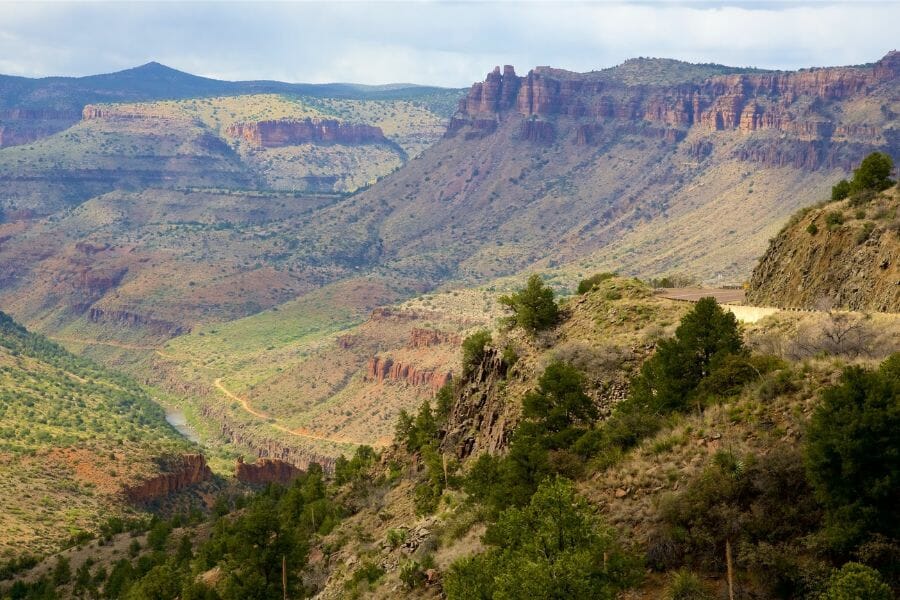
Gila County is a hidden gem of natural beauty in central Arizona. The county is located in the Tonto National Forest, home to some of the most spectacular geology, terrain, and geography in the state. The area is known for its stunning mountain ranges, including the Pinal Mountains and the Sierra Ancha, and is a paradise for outdoor enthusiasts and nature lovers alike. The geology of Gila County is incredibly diverse, with a variety of sedimentary, volcanic, and igneous rock formations that tell the story of millions of years of geological history. Its geology also makes it one of the best sources of Arizona crystals.
The terrain is rugged and varied, with steep canyons, towering cliffs, and rolling hills providing endless geode hunting opportunities. The area’s geography is equally impressive, with lush forests, sparkling rivers, and expansive deserts. With its breathtaking scenery, rich geological history, and diverse landscapes, it’s no wonder that this hidden gem has become one of the most popular spots in Arizona for outdoor recreation and exploration.
Where we found geodes in Gila County
- Land around Payson area
- Payson area, around Ellison Creek
- Payson area, Geode Hill
Maricopa County
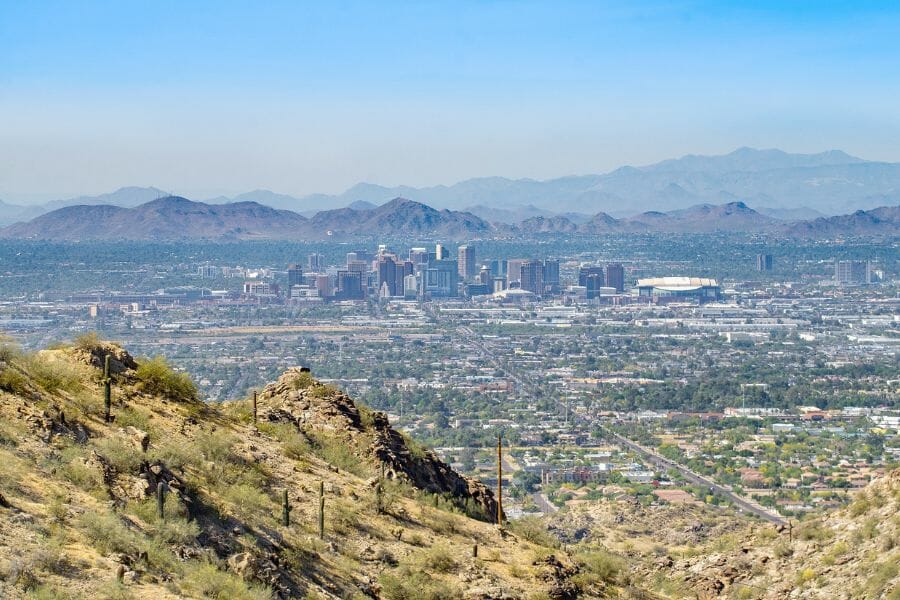
Hernando County is a great place to enjoy the outdoors. Its geography is diverse, with large stretches of flat terrain interspersed with rolling hills and small mountains. The county’s terrain varies from coastal marshes to pine flatwoods and sandhill ecosystems. Geologically, the county is part of the Ocala Uplift – an area of uplifted limestone and sandstone that produces stunning karst formations.
In addition, there are numerous lakes and springs throughout the county. The climate in the area is generally mild, with warm summers and mild winters. Average temperatures range from the mid-60s in winter to the mid-90s in summer. The area receives an average of 52 inches of rainfall annually, making it an ideal spot for outdoor activities like geode hunting.
Where we found geodes In Maricopa County
- Gila bend along ledges further east
- Aguila area, 2 miles west on US 60 to the ranch road, 5 miles south on the ranch road to fork.
- Big horn area, Travel south to Javelina Camp at the southeast base of the mesa.
- Hassayampa area, search in debris on the south side of the pass after traveling 8 miles on the Gillespie Dam route and 21 miles west to Fourth of July Peak.
- The Sauceda Mountains gather northward in the Midway area, 7 miles east on Jeep road to the west side of Hat Mountain.
- Travel southwest on Apache Trail (Route 88), then south for 112 miles to reach the Port of Phoenix on Canyon Lake Reservoir from Roosevelt Dam.
- Tortilla flat area at the sides of Canyon Lake Reservoir.
Mule Creek
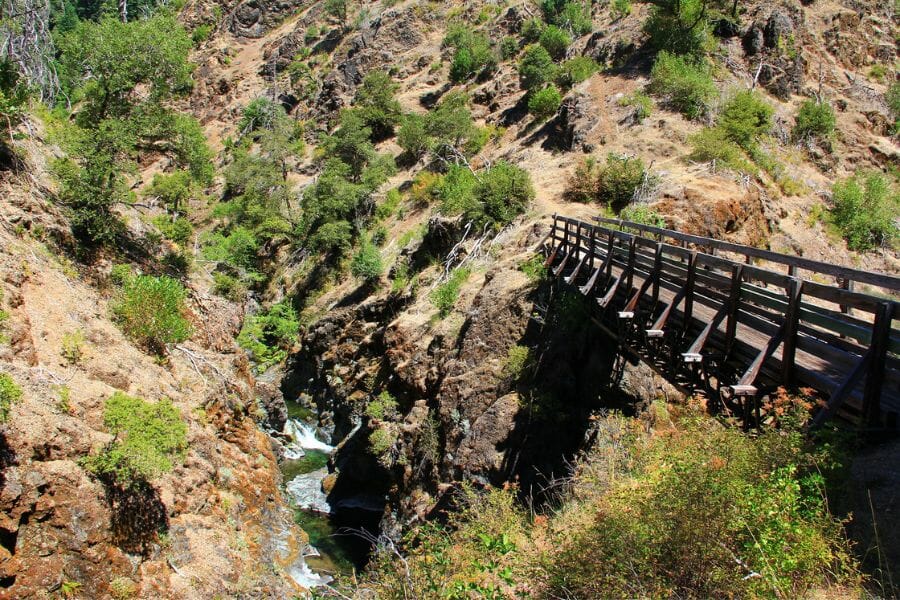
Mule Creek is a picturesque stream that flows through southeastern Arizona, surrounded by stunning natural beauty. The creek is known for its crystal-clear water, which sparkles in the sunshine, and provides an idyllic setting for outdoor recreation and relaxation. The area’s geology is equally impressive, with various rock formations that tell the story of millions of years of geological history.
The terrain around Mule Creek is rugged and varied, with steep canyon walls and rolling hills providing endless exploration and geode hunting opportunities. The geography of the area is equally diverse, with lush forests, wide-open meadows, and sparkling streams that support a wide range of plant and animal life. With its stunning scenery, rich geological history, and diverse landscapes, Mule Creek is a true hidden gem of southeastern Arizona.
Where we found geodes in Mule Creek
Geodes can be collected along both sides of Mule Creek.
Yuma County

Yuma County is a unique and diverse region located in southwestern Arizona. The county is known for its vast, open landscapes and rich natural beauty. It’s also known for its rich cultural history, as it was home to several Native American tribes and played an essential role in the United States’ westward expansion. The area’s geology is fascinating, with various sedimentary and volcanic rock formations that tell the story of millions of years of geological history.
The terrain in Yuma County is largely flat, with expansive deserts and wide-open spaces that provide endless outdoor exploration and recreation opportunities. The area’s geography is equally diverse, with winding rivers, towering mountains, and lush riparian zones that support a wide range of plant and animal life. From the Sonoran Desert’s stark beauty to the Colorado River’s winding waters, Yuma County is a paradise for outdoor enthusiasts and nature lovers.
Where we found geodes in Yuma County
- Several places in Castle Dome District, the Castle Dome Mountains, and the Middle Mountains.
- West of US 95 junction to the Castle Dome District, 1.9 miles on dirt road, take the north fork to its end at 2.5 miles.
- Southwest half a mile, as beds in Quartzsite area.
- all regional draws, washes, hillsides
- Welton area, Southwest of Cabeza Prieta Mts., in the area of many unlisted collecting localities.
Other Great Places To Dig For Arizona Geodes
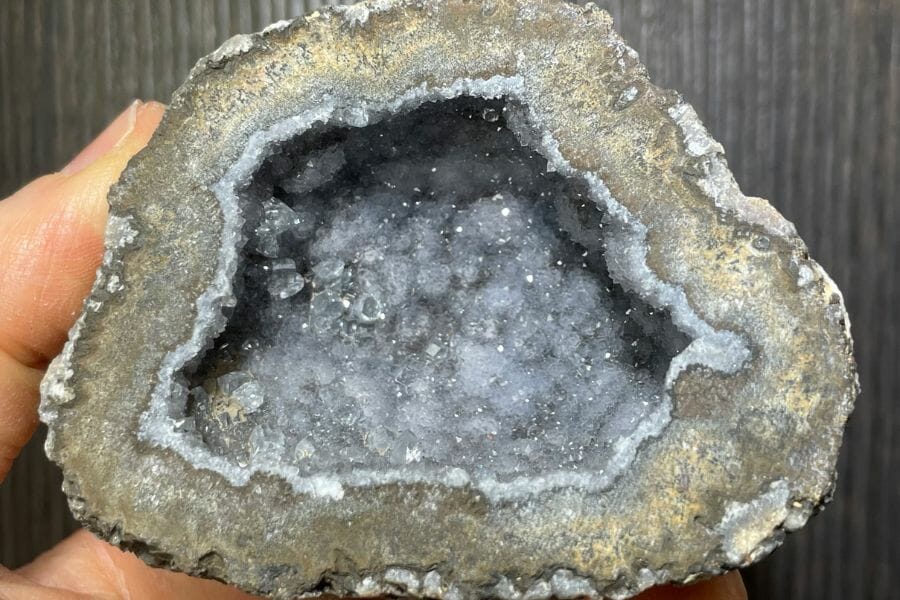
After mentioning our favorites, we wanted to share about the other places on our list. We’ll next list a few more general areas where we’ve succeeded and state each suggestion per county.
Our recommendations by county
| County | Location |
| Gila | Land around Payson |
| Gila | Payson area, around Ellison Creek |
| Gila | Payson area, Geode Hill |
| Greenlee | Both sides of Mule Creek road in Clifton area |
| Greenlee | Guthrie area, just below summit on west side |
| Greenlee | York area, 1 mile north on SR-75 then right on Mule Creek Road, collect along both sides |
| Maricopa | Gila bend farther east, along ledges |
| Maricopa | Aguila area, 2 miles west on US 60 to ranch road on left, 5 miles south on ranch road to fork |
| Maricopa | Big horn area, the southeast base of the mesa, south to Javelina Camp |
| Maricopa | Hassayampa area, search in debris on the south side of the pass after traveling 8 miles south on the Gillespie Dam route and 21 miles west to Fourth of July Peak. |
| Maricopa | Midway area, in the Sauceda Mountains, 7 miles east on Jeep road, gather on the western slope of Hat Mountain. |
| Maricopa | Roosevelt Dam, southwest on Apache Road (Rte. 88), to Port of Phoenix on Canyon Lake Reservoir, then south for 1.5 miles |
| Maricopa | Tortilla flat area, on the Canyon Lake Reservoir sides |
| Pinal | Florence area, From the right-hand side of the RR tracks, head east through the underpass to the Price Flag Stop (marking 969), then turn north for 9 miles ot reach Martinex Silver Bell Mine. |
| Pinal – Maricopa | Apache Junction, Northeast into Maricopa county, 15 miles along the Apalache trail, all area along both sides of highway. |
| Yavapai | 24 miles northeast of Morristown, in the surrounding area of Castle Hot Springs |
| Yuma | Several places can be found in the Castle Dome District, the Castle Dome Mountains, and the Middle Mountains./td> |
| Yuma | Castle Dome District, take the north fork to its end at 2 miles./td> |
| Yuma | Quartzsite area, southwest 0.5 miles, as beds./td> |
| Yuma | Every local stream, wash, and slope/td> |
| Yuma | In the Cabeza Prieta Mountains, Welton area/td> |
Common Geode-Hunting Questions
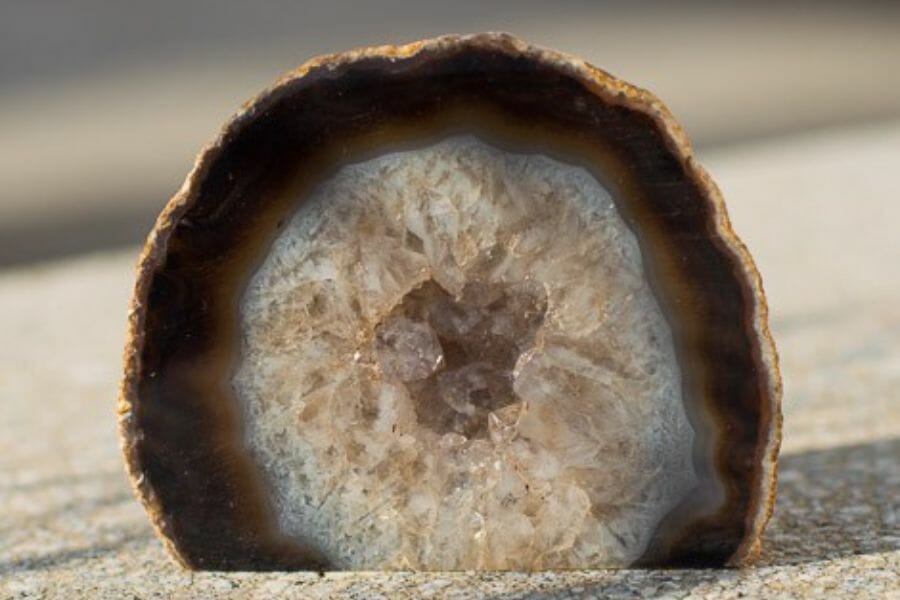
Frequently asked questions about geode hunting in Arizona should also be answered here, including the following:
Where can you find amethyst geodes in Arizona?
Although amethyst geodes are not naturally found in the state, they may be purchased in several Arizona rock and mineral shops. You can also find them in rock shows that often occur in the state and buy them from merchants.
Is it illegal to collect geodes in Arizona?
It is important to keep in mind that certain areas in the state that may have regulations or guidelines in place to protect the land and preserve its natural resources. It’s always a good idea to research the specific area you plan to visit and make sure you abide by their local laws. You must also have the permission to collect if you’re planning to go to a private property to search for geodes.
The Best Places To Buy Geodes In Arizona
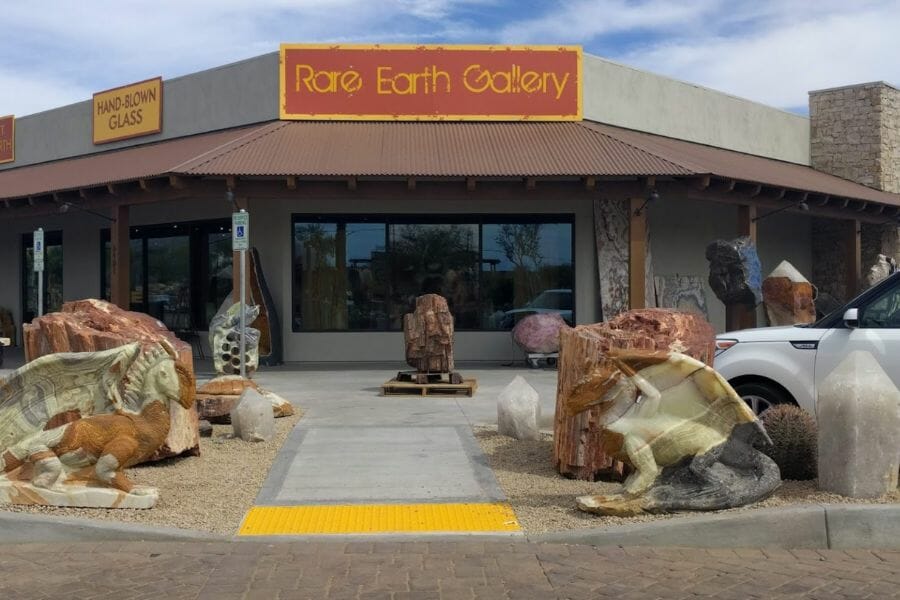
If you’re an enthusiast or collector, getting your hands on geodes would always feel amazing! But not everyone likes to do the dirty and hard work. So, if you’re one of those people who wants to find geodes without having to do that, this is for you!
Here are some of our preferred neighborhood rock shops where you may discover and purchase geodes of our choice:
- Arizona Lapidary and Gem Rough – 5817 E Speedway Blvd, Tucson, AZ 85712, United States
- Amazon – We discovered that there is a large selection of geodes on Amazon. There are even complete kits that include geodes to crack apart for individuals who would prefer to do it themselves.
- Arizona Rock Shops – 4107 AZ-68, Golden Valley, AZ 86413, United States
- Desert Gardens International Rock – 1055 Kuehn St, Quartzsite, AZ 85346, United States
- Miner’s Rock Shops – 1103 W Fairmont Dr, Tempe, AZ 85282, United States
- Rare Earth Gallery – 6401 E Cave Creek Rd, Cave Creek, AZ 85331, United States
Additional places to find geodes in nearby states
Check out our guides for nearby states if you’ve already tried all of our suggestions above or if you’re planning a trip outside of the state:
If you have any recommendations for our list, please leave a comment below!

